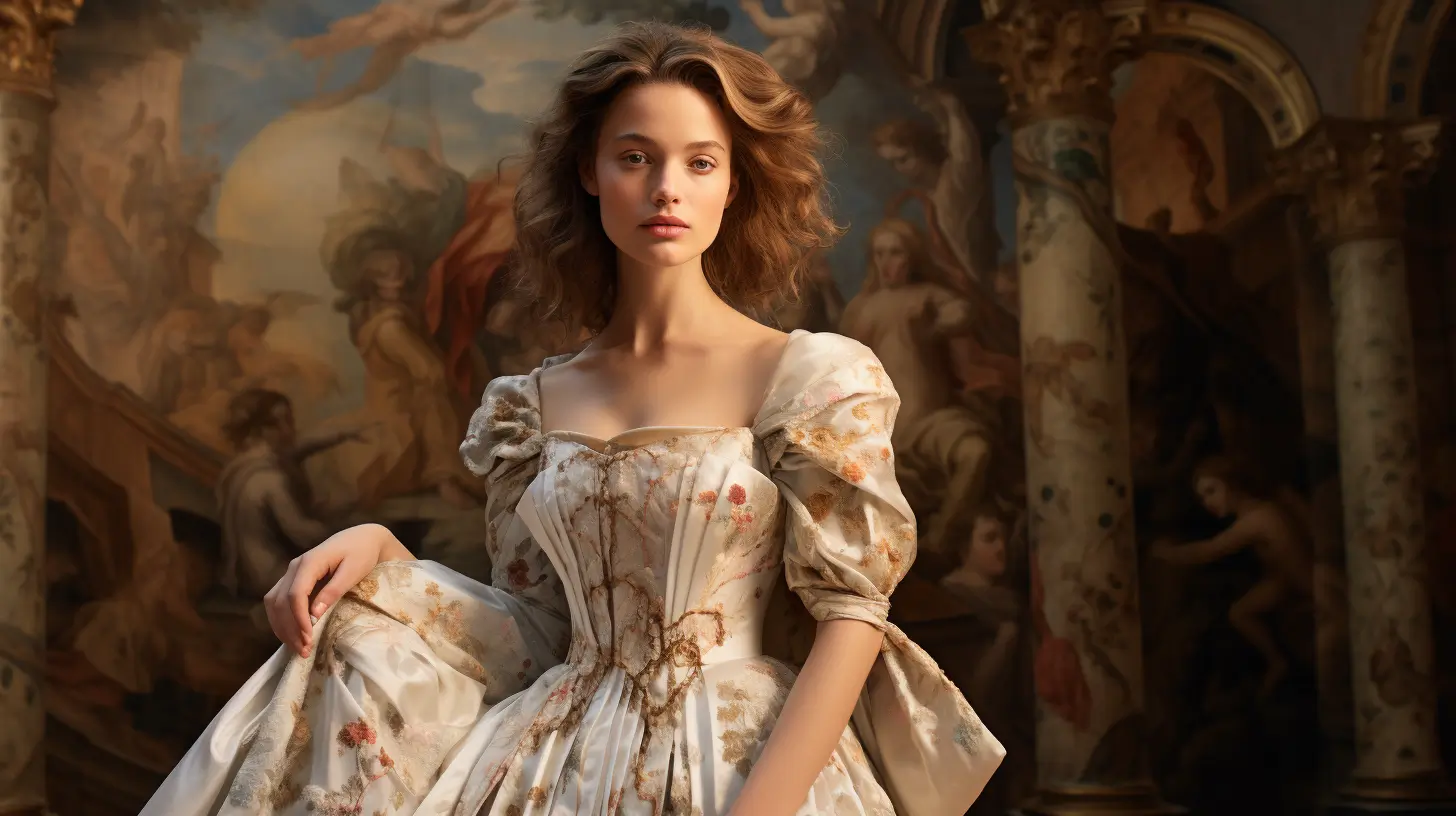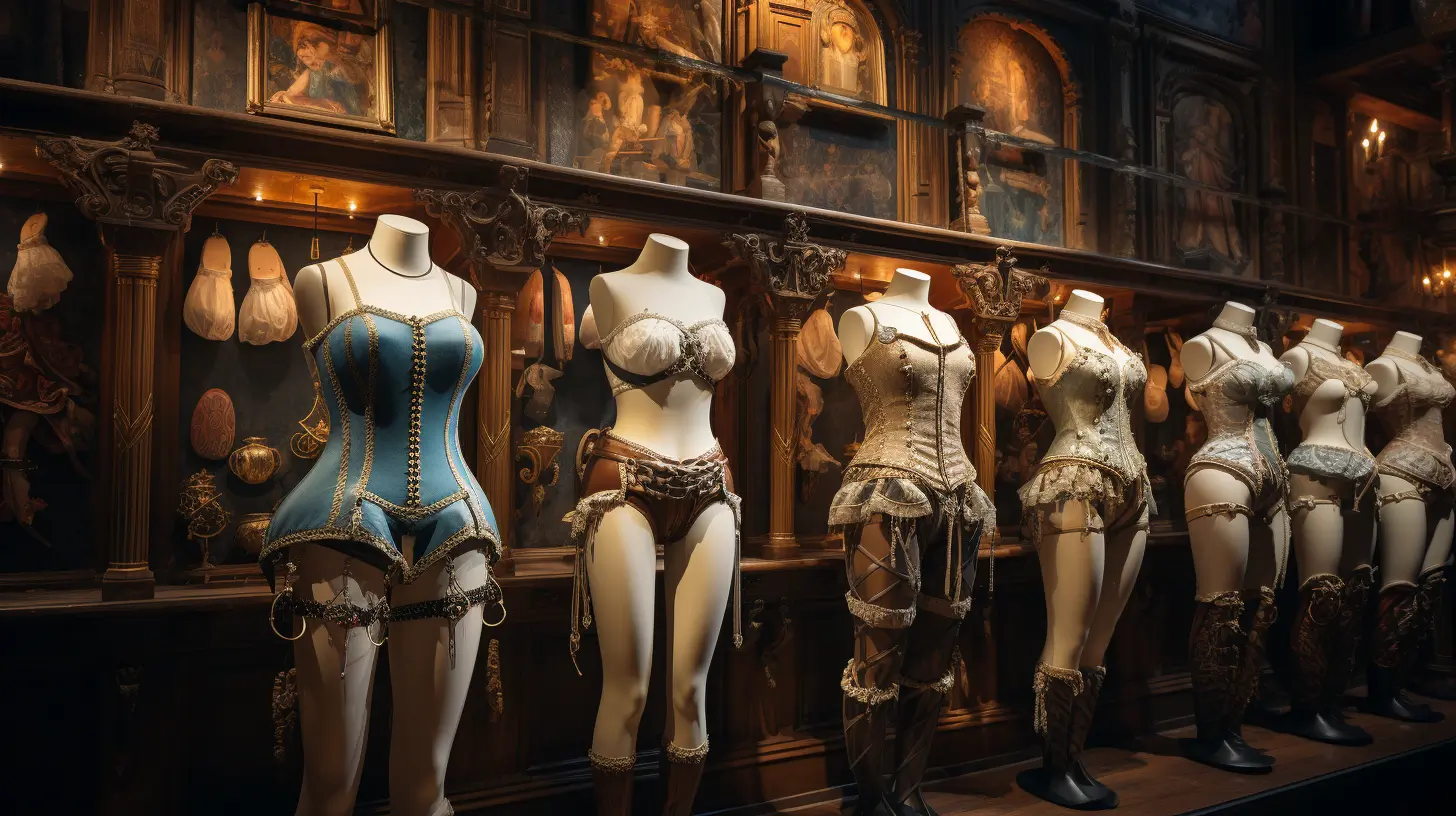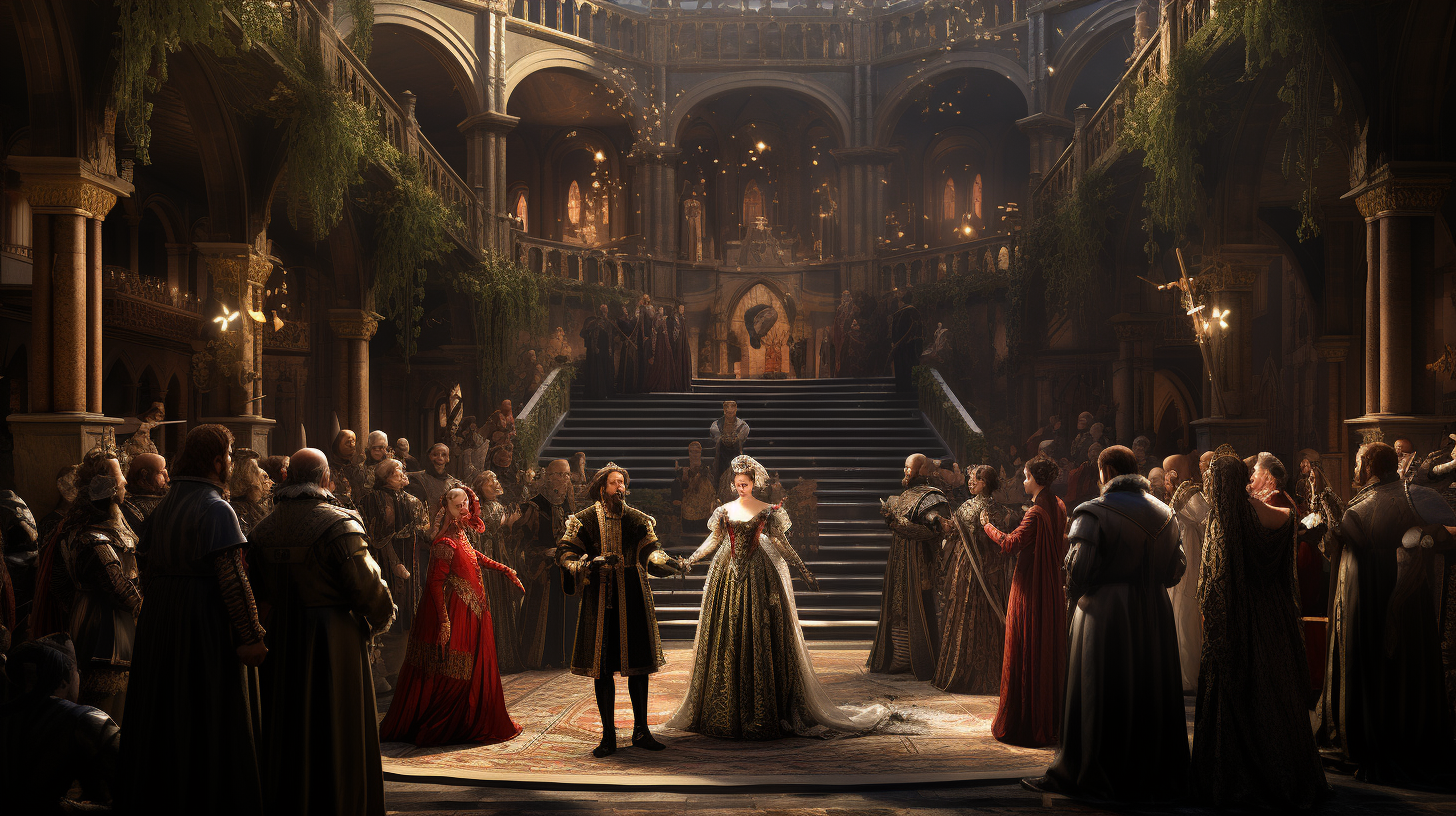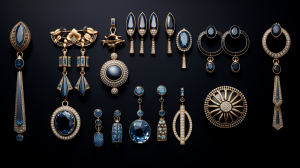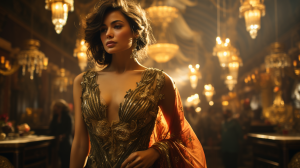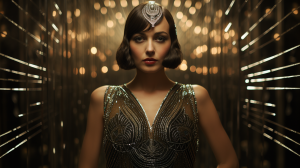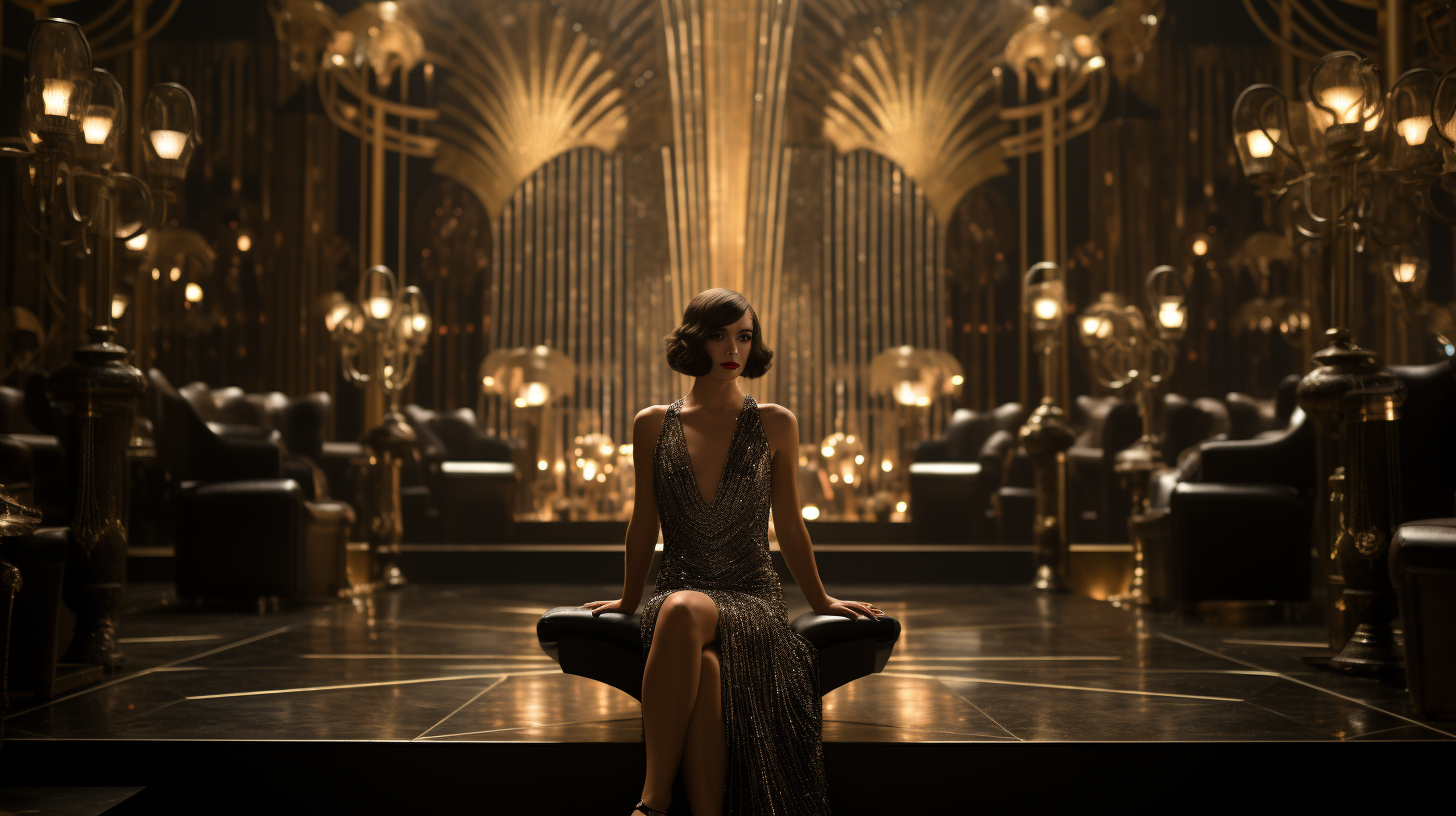
Art Deco Fashion in Film: From the Roaring 20s to the Silver Screen
Welcome to a mesmerizing voyage where the silhouettes of the past dance in the flickering light of the silver screen. Let’s indulge in the lush tapestry of Art Deco fashion and its indelible imprint on the celluloid dreams of Hollywood. Here, we won’t just skim the surface; we’ll dive deep into the Art Deco ocean, unearthing its treasures and weaving its narrative into the rich fabric of film history.
The Ballet Russes & Avant-Garde: The Precursors to a Revolution
Step into the electrified air of a theater where the Ballet Russes defy gravity, where the stage becomes a canvas for a revolutionary burst of color and movement, embodying the spirit of modernism that would bleed into the very fibers of Art Deco. Each leap, each spin was a bold brushstroke of innovation, painting over the drab conventions of the past. This was no mere dance; it was the avant-garde in motion, a prophecy of the sweeping changes that would ripple through the realms of art and fashion.
Envision the costumes, not just garments but manifestos worn proudly by each dancer, declarations of a new world order in style. Here, fabric and thread wove together to shout defiance against the stiff, muted norms that had long shackled the fashion world. They were chromatic symphonies that resonated with the times, shaking the very foundations of the belle époque’s aesthetic values. Each costume was a herald, announcing the coming of an era where fashion would not just adorn, but also make statements loud and bold.
And in the eye of this maelstrom of creativity stood Paul Poiret—a visionary tailor, a liberator of women from the laced-up confines of the corset, a messiah leading his followers to the promised land of unencumbered grace. With his scissors as his scepter, Poiret cut through the dense fabric of Victorian excess, proclaiming a new gospel of simplicity and fluidity. The straight lines and clean cuts of his creations were more than fashion; they were the silent yet resounding battle cries of the forthcoming Art Deco epoch.
Poiret’s fashion was a celebration of the body’s natural form, an ode to the liberated silhouette. His influence spread like wildfire, igniting the imaginations of a generation and setting the stage for the Art Deco designers who would take his principles and run with them, straight into the embrace of a world eager for change. In doing so, he laid the foundation for a design revolution, one that would echo through the halls of time and still resonate with us today.
Cinematic Elegance: Art Deco on the Silver Screen
Transport yourself back to the dazzling era of the Roaring Twenties, where the burgeoning film industry became the gleaming jewel in the crown of popular culture. In the grand movie palaces, beneath the flicker of the projector’s light, a visual feast of style and sophistication awaited the eager masses. Here, on the silver screen, cinema found its sartorial soulmate in Art Deco, a style that came to define the age of jazz and jubilation.
The movies of the period were more than mere storytelling vehicles; they were moving canvases, showcasing the elegance and extravagance of the times. Art Deco was the brush with which directors and set designers painted their scenographic masterpieces. The screen became a window into a world where architecture and fashion collided with the force of modernity, every frame a meticulous construction of the Art Deco ethos.
Flappers became the icons of this new cinematic world. They shimmered on screen, their bobbed hair a declaration of rebellion, their dresses a glittering homage to the new freedoms of the post-war woman. Each sequin, each feather on their scandalously short skirts, was a challenge to the old order, a visual representation of the seismic societal shifts occurring off-screen.
In parallel, the era’s men strode into this brave new world with a sartorial boldness that matched their female counterparts. They were clad in double-breasted suits that cut a striking figure with their sharp lines and geometric patterns—a nod to the Art Deco influence. These suits were not merely clothes; they were armor of sophistication, capturing the essence of a time when the very silhouette of fashion was transformed.
The Roaring Twenties cinema didn’t just present actors; it offered icons, idols who were etched into the zeitgeist in Art Deco style. Every curve of Greta Garbo’s cheekbone, every dashing tilt of Rudolph Valentino’s hat, was a tribute to the aesthetic of the age. And in this celebration of modernity, the silver screen became the most glamorous and public altar of Art Deco, a testament to its enduring influence and a bridge to the endless possibilities of a new, modern age.
Hollywood’s Alchemists: The Costume Designers’ Craft
Let’s slip through the back door of the glittering theaters and into the labyrinthine workshops where the real magic happens. Here, in the half-light, with the soft whisper of silk and the sharp snip of shears, the costume designers, those artisans of illusion, are the unsung heroes, the wizards working their quiet spells of thread and fabric.
These are the folks who don’t just dress actors; they sculpt personas, one seam at a time. They are the architects of dreams, the silent narrators whose language is texture and color, shape and silhouette. Imagine them as the connective tissue between the ethereal ideas of the story and the flesh-and-blood characters that stride across the screen.
In these hallowed halls of creativity, someone like Cedric Gibbons stands out—a maestro wielding his sketches like a conductor’s baton, bringing forth from the chaos of tulle, tweed, and taffeta, a cohesive vision that would come to be synonymous with the opulence of an era. From the streets of Paris, he imported not just fabric, but a philosophy, a whole aesthetic that would anchor the grand narratives of MGM to a visual reality both lavish and precise.
With every garment, a world is woven. Each pleat and dart is a line in the story. These costumes are more than wardrobe; they are declarations, proclamations of identity. Every fold of chiffon, every drape of velvet, speaks of the character’s inner life, their struggles, triumphs, and the times they inhabit.
The alchemists of Hollywood’s golden era were the invisible hands shaping the visible world of Art Deco decadence. Their craft was a silent sonnet to the power of collaboration, with directors, actors, and designers in a tango of creativity. The end result? A crescendo of costume, a visual symphony that transformed the language of fashion into a cinematic dialogue, echoing long after the final credits rolled.
Art Deco’s Golden Glow: A Beacon Through Dark Times
Even as the world grappled with the Great Depression, the Golden Age of Hollywood glistened with Art Deco’s promise of better times. The grandeur on display whispered of possibilities and the hope that beauty could be a balm for weary souls. Cinemas became secular cathedrals where the faithful gathered to worship at the altar of glamour. Here, the high priests of photography captured the epoch’s essence, forever encapsulating its spirit in the amber of celluloid.ChatGPT
In the midst of the Great Depression’s gray grip, there flickered a light of defiant opulence—a golden glow from the heart of Hollywood, no less dazzling for its contrast with the austere reality outside. This was the beacon of Art Deco, a visual promise that sang of better times to come, a siren call of splendor in a sea of dust bowl ballads and bread lines.
The movie palaces, grand and gilded, rose like phoenixes from the urban sprawl, sanctuaries of escapism where one could trade a nickel for a glimpse of paradise. These temples, adorned with the sleek geometry and bold lines of the Art Deco ethos, were more than mere buildings. They were the canvas upon which the spirit of an era was painted in broad, shimmering strokes.
Inside, the silver screen blazed with tales of romance and adventure, of detectives in sharp suits and dames with eyes full of mystery. The actors, gods and goddesses among men, paraded before the masses in costumes that were nothing less than wearable art—each sequin a defiant sparkle against the dreary backdrop of the times.
As outside, bread lines wound like serpents through city streets, inside, the high priests of the camera lens worked their alchemy. They captured not just images, but dreams, aspirations, the very essence of an epoch that refused to bow to despair. These images, set against the stark reality of the Depression, stood as glittering testaments to human resilience, to the undying quest for beauty amidst ugliness, light within darkness, joy in the face of sorrow.
Cinemas became the nightly gathering spots, the communal hearths around which stories were told and retold, not through words, but through the flickering dance of light and shadow. And there, in those hushed auditoriums, the people found a common language in the reverence of glamour, a shared belief in the redemptive power of beauty—a collective agreement that, no matter how dark the night, the dawn must surely break. And so it was, in those dark times, that the golden glow of Art Deco not only illuminated the screens but also the hearts of those who dared to dream for something brighter.
The Phoenix Rises: Art Deco’s Modern Reincarnation
In today’s cinematic landscape, there’s a familiar shimmer—an echo of the past reimagined for the modern eye. It’s Art Deco, resurrected and resplendent, its timeless appeal drawing a throughline from its Jazz Age origins to the present-day pulse of popular culture. In this reincarnation, it’s not just a rehash of former glory; it’s a nuanced revival, a phoenix soaring from the ashes with renewed vigor and contemporary relevance.
It’s seen in the curve of a chrome line, the bold geometry of a backdrop, the lavish opulence of a set piece that marries the old with the new. It’s Art Deco redux, but now with a twist, as filmmakers and designers inject this age-old style with modern sensibilities, blending the vintage with the cutting-edge, the iconic with the innovative.
This is not your great-grandparents’ Art Deco, confined to the realms of nostalgia. This is a vibrant, living language of design that speaks to both history and the horizon. We witness this resurrection across the spectrum—from the haute couture runways where designers pay homage to the past in their forward-looking creations, to the visual feast of today’s blockbuster spectacles, where every frame is steeped in the angularity and elegance that defined an entire movement.
Set decorators, those maestros of space and ambiance, summon the spirit of the style with a deft hand, creating environments that are at once distinctly Art Deco and undeniably of the moment. They harness its innate ability to suggest the grandeur and the geometry of the urban landscape, crafting scenes that are as much about the interior world as they are about the exterior flourish.
The resurgence of Art Deco is not merely a trend; it’s a testament to the enduring power of design. It’s a reminder that some things never go out of style—they just wait for the right moment to rise again, to cast their spell over a new generation hungry for the elegance of yesteryear, tempered with the dynamism of today. In this modern world, Art Deco doesn’t just make a comeback; it takes its rightful place as a classic that continues to inspire, to evolve, and to illuminate the path from the past to the future.
.
As the last reel spins, you come to realize Art Deco isn’t just some ephemeral trend that danced through a few raucous decades—it’s the vernacular of an era that roared louder than any before it. This was no mere fashion statement; it was a revolution meticulously stitched into the very fabric of the zeitgeist, speaking volumes about who we were and where we were daring to go.
When you delve into the hallowed hallways of Fashion Time Warp, you’re not just thumbing through old sketches and faded photographs; you’re time-traveling. Every hemline tells of boundary-pushing bravado, every sleek silhouette a sonnet to innovation. It’s an anthology of ambition, where each outfit is a chapter, each accessory a punctuation mark in a saga of defiance and discovery.
Art Deco whispered of sophistication at a time when the world was ready to shout. It cradled the future in the crook of its geometric arms and promised a world unshackled from bygone austerity. Through the curated collections of Fashion Time Warp, these stories—these legacies of cloth and crystal—spill forth in a lavish display, weaving a tapestry that stretches across time and space.
So step inside, shed the present like last season’s fads, and immerse yourself in the grand narrative of Art Deco fashion as it’s unfurled in the silver screen’s shadow. Here, in the annals of our collective fashion ancestry, the spirit of an age waits to be rediscovered, ready to wrap you in its timeless tale of elegance and edge. It’s an epic that’s always unfolding, a story that never truly ends as long as there are those willing to turn the page and drift into its enduring splendor.


